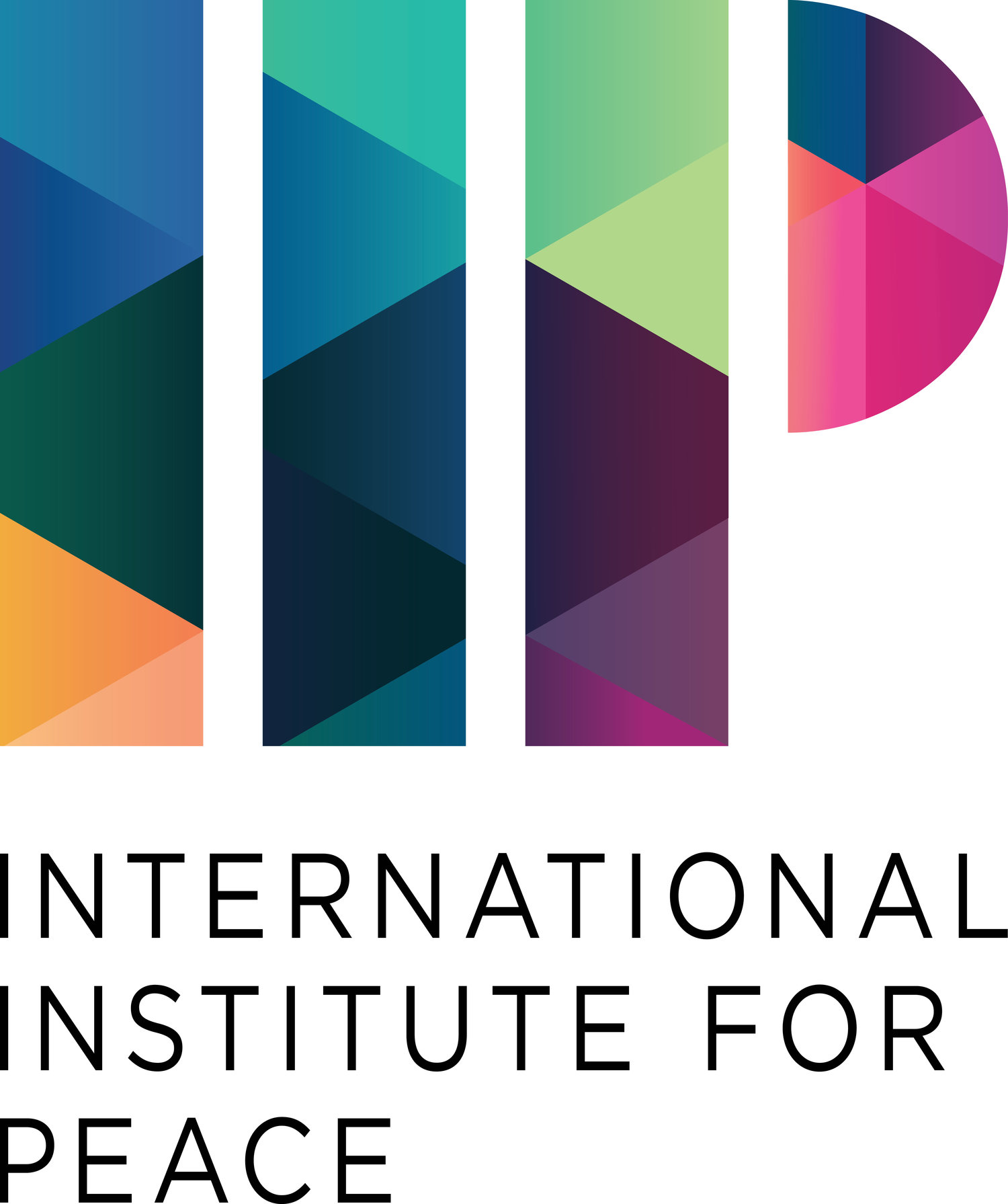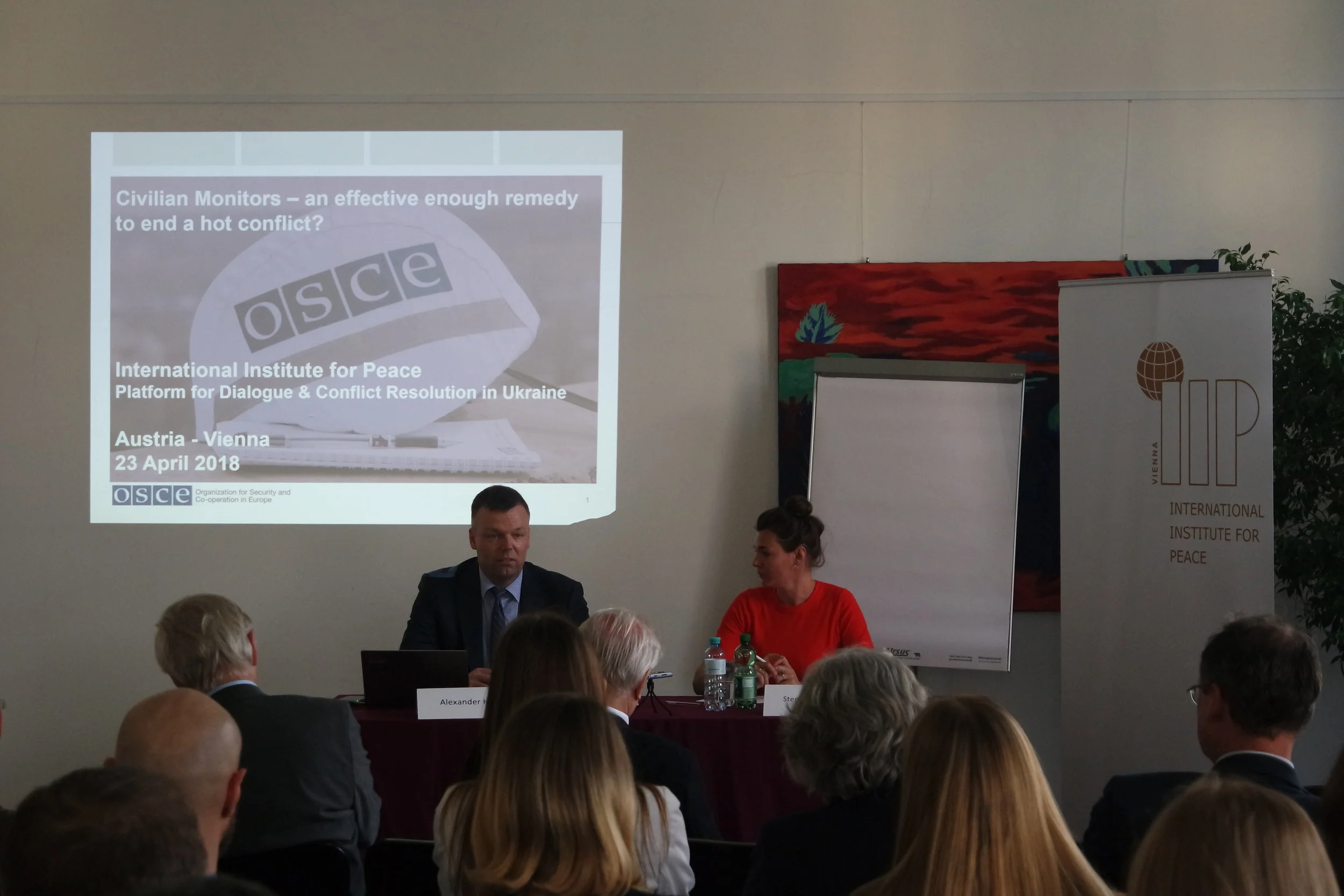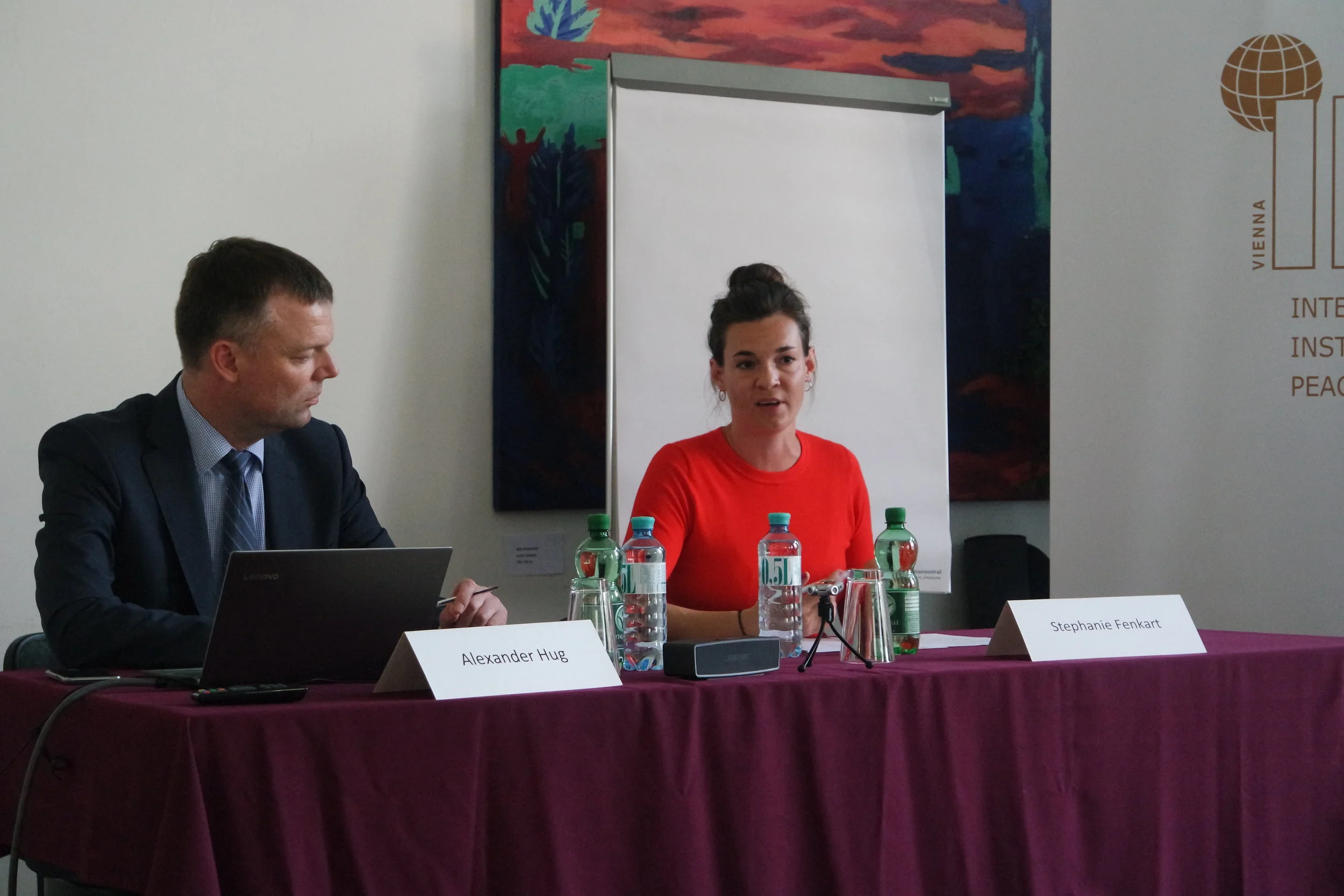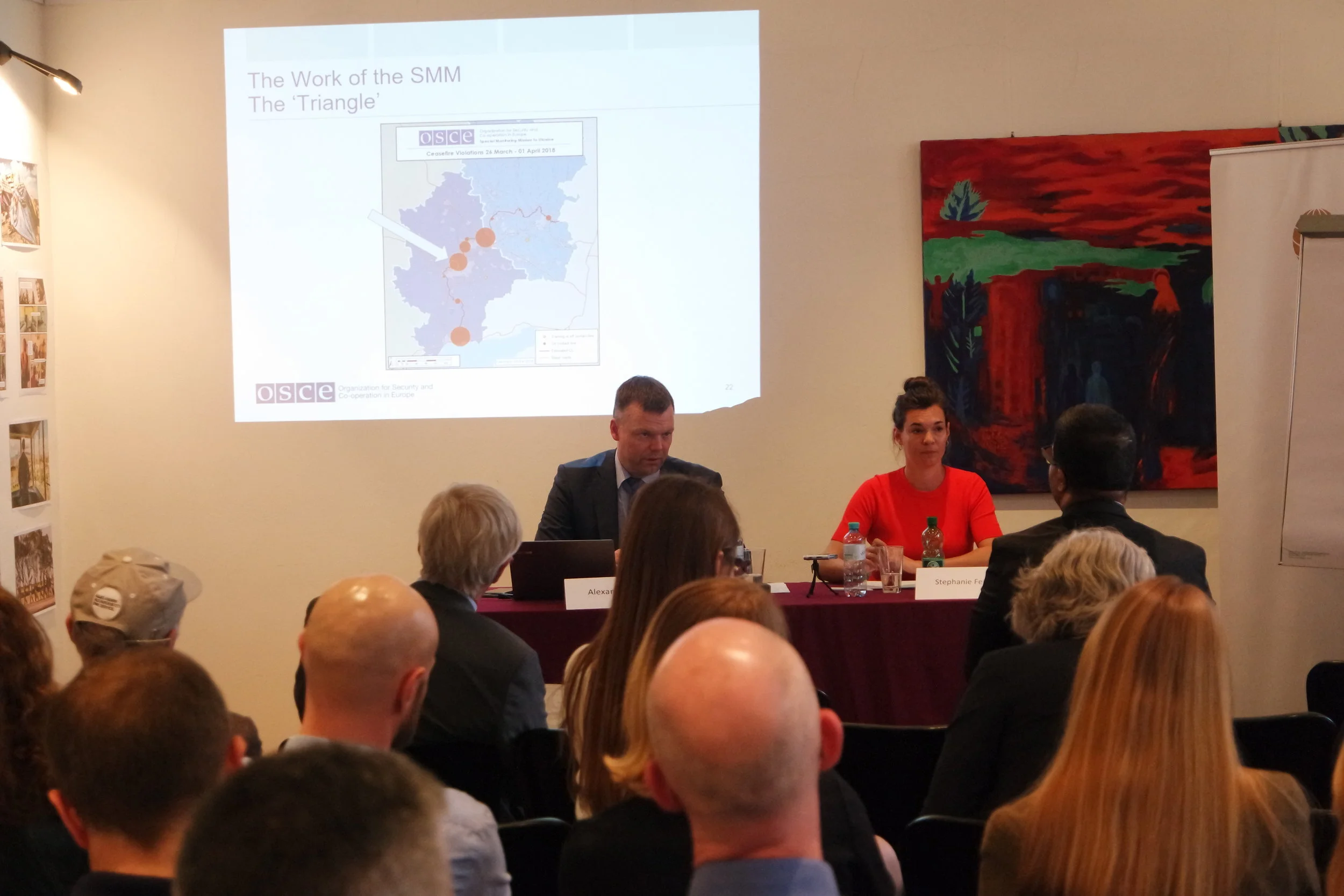On 23 April 2018, The Platform for Dialogue and Conflict Resolution in Ukraine had the opportunity to host an exciting event with Ambassador Alexander Hug, Principal Deputy Chief Monitor of the OSCE Special Monitoring Mission to Ukraine. Providing insights in the work and daily life of the Special Monitoring Mission, the discussion revolved around the question whether OSCE civilian monitors were an effective enough remedy to end a hot conflict in Ukraine.
In his introduction of the OSCE Special Monitoring Mission (SMM) to Ukraine Ambassador Hug emphasized that the mandate of the Mission originated from the 57 OSCE member states and not from the Minsk Agreements, as it is often mistakenly thought. The mandate of the SMM is not to implement the Minsk Agreements but to monitor and report as well as to facilitate dialogue between the conflicting parties. The Mission mainly observes the military-technical aspects of the Minsk Agreements, that include non-use of weapons, disengagement of positions and hardware, demining, and withdrawal of heavy weapons. While the bulk of the Mission is located in Eastern Ukraine, it also has presence across the whole country, for example in Odessa and Western Ukraine. The whole SMM consists of over 700 monitors that were commissioned by 44 OSCE participating states. They are complemented by around 400 Ukrainian colleagues and something over 100 international staffers. In Eastern Ukraine the SMM monitors, among other things, the contact line between the Ukrainian government-controlled territory and the area beyond government control which consists of large parts of Donetsk and Luhansk regions. The contact line between these two sides is almost 500 km in length which makes it very challenging to monitor despite the usage of various technological equipment. The Mission has continuously registered ceasefire violations on both sides of the contact line in Eastern Ukraine. The number of violations usually drops almost to zero shortly after recommitments to the Minsk Agreements are made on the political level. However, with time it gradually increases again.
Among the challenges that the SMM in Ukraine faced Alexander Hug named political barriers, such as lack of a common definition of the conflict, lack of clarity about who the parties of the conflict are, difficulties for the Mission to prove its effectiveness, and misperceptions by the local population of the mandate of the Mission, which they wrongly assume includes protecting civilians and delivering humanitarian aid. Operational challenges include freedom of movement restrictions of the monitors posed on both sides of the contact line as well as lack of personal security of the monitors in the field.
When answering the question posed by the moderator of the panel about the pertinence of establishing a UN peacekeeping mission in Ukraine – a proposal that had recently appeared on the political agenda, Ambassador Hug acknowledged that such a mission could play a vital supportive role necessary for the full implementation of ceasefire. However, he noted, that ultimately it was only the conflicting sides themselves that could stop the fighting.
Regarding the humanitarian situation directly at the contact line, the Ambassador acknowledged that civilian population suffers greatly. The settlements located between checkpoints on the two sides of the contact line are affected most severely, as even humanitarian aid does not reach them. When moving further from the contact line into the non-government controlled territories life gets more normal. For example, in Donetsk transportation, shops and even theatres function. On the other hand, many industrial enterprises lay in ruins and it is difficult to get access to certain, usually more sophisticated, forms of medical treatment. What is really remarkable, however, is that it is quite common for civilians to cross the contact line almost on daily basis – a rare thing for conflict zones. This is a very unsafe journey, but people are willing to undertake it. ‘They do not accept the conflict, they argue it is not theirs’, says Ambassador Hug.
Responding to a question posed by a Ukrainian Ambassador present in the audience about the availability of a technology that would monitor the whole contact line and thus enabling the OSCE to determine who started the fire, Ambassador Hug was not aware of the existence of such a technology, taking into account the great length of the contact line. In addition, he noted, that even if it existed and were put in place it would not have changed the equation. The SMM has recorded ceasefire violations on both sides. ‘The question should rather be posed what are the sides doing based on these observations? And the answer is – very little’.
Another question concerned the activities of the SMM observers in other parts of Ukraine. There, they for example monitor protests and demonstrations as well as the situation of internally displaced people who fled Eastern Ukraine are how they are received in other communities across the country. In Western Ukraine there have been issues with the attacks on the property of the Hungarian minority that live there which was also recorded by the SMM.
One of the audience members observed that during his week-long stay in Luhansk there had been no shelling only on one day when the SMM visited the city. Responding to that, Ambassador Hug agreed that the SMM had a certain deterrence effect. When monitors come to an area some violations of ceasefire do not happen, however, not always. In any case, it is not a sustainable way to maintain the ceasefire.



